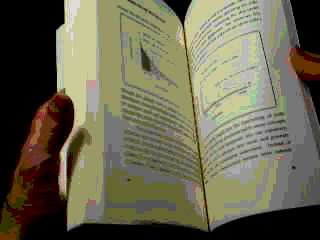
Chapter Ten
Bayesian Underwriting and Commercial Fires
Our sibling organization in the States to the South was
experiencing a problem in their commercial underwriting. It
was said that mobility and rising expectations were depleting
their pool of knowledgeable underwriting staff. The situation
was particularly acute for their commercial risks. These risks
required a highly seasoned underwriter, someone who had been
exposed to a broad range of businesses, from retail stores to
manufacturing to storage facilities; someone who knew the
basic construction techniques of typical physical plants;
someone who could assess a company's basic financial health;
someone who had accumulated a mental database of accidents
and their causes; someone who could put all these pieces
together into a gut-feel about a prospective insured's level of
risk compared to others in their class. Now we knew that these
skills required many years, broad exposures and much insight to
develop. Our indians relied on long apprenticeships filled
with observation, and access to senior sages, to reach this level
of proficiency in measuring our risks. Some called it 'sitting by
Nelly', one of KGH's favorite analogies.
Although the Southern tribes were glutted with vice-presidents
and fancy titles, their research resources were enviable
and they were now planning a major assault on their
underwriting difficulties. They hoped to capture the thought
processes of their senior sages and use this expertise to improve
the underwriting results of their junior staff. For this venture
they were allocating major amounts of time and money in a
process involving conferences and consultants, computers and
controversial theories. Our chiefs expected that the real cause
of their problems was inflated hype and an unwholesome taste
for self-flagelation. But inflation had come to Canada and we
were seeing rising attrition among our branches' junior staff, so
our chiefs were open to observing what our Southern sibling
would try. Being esoteric, it became our group's mission. The
funding for our participation however was severely
constrained. We would be allowed occasional visits only, not
massive amounts of consultants' time nor many extended
conferences with dozens of senior underwriters from around the
country. That was Southern style.
This clearly very limited objective however held little
benefit for our cause. Our scheme was to build an actual
prototype of the expert system on our mini, with enhancements
of our choosing and without waiting to see the Southerners'
final solution. This ambitious project, originally code named
C.A.R.E. for Computer Assisted Risk Evaluator, we christened
Nelly. For our female sage, our Nelly, civility would be second
nature; and we also planned to incorporate an automated
version of the underwriting manual for commercial fire. This
volume was a huge compendium of rules, standards, codes,
instructions, exceptions. Comprehensive and intimidating, this
resource, though vital to the underwriters, not only was a
daunting challenge to the junior staff but was frequently in need
of updates. Those replacement pages and additions issued by
the chiefs did not always reach their intended destination in
each and every copy of the book. A central automated version
of the manual would be more manageable for both chiefs and
indians. Although our prototype would only test the guidance
function for our indians, the benefits of having to keep only our
one final mainframe version current would make life simpler for
the chiefs.
By integrating the manual with an expert system that
emulated the thought processes of a senior chief as he combined
the required assessments into a rating and then calculated the
company's available capacity, of all kinds, our own and
reinsurers, Nelly would make expertise more available to each
indian while relieving the sages to concentrate their
consultations on finer points. The junior staff could easily ask
Nelly hypothetical questions or what difference it would make
if some borderline assessment had been different, which would
tell him whether it was important to investigate further. To
complete the package, our indians could send their results to
print, eliminating transcription errors as they documented their
work for the underwriting files.
We were excited at the promise this project held for
the company. Our unwashed irregulars' approach held more
benefit and was orders of magnitude less costly. After
considering the Bayesian basis, I felt sure that I could take this
on, even though the concept of a computer emulating an expert's
thought processes was new and controversial. KGH took pains
to reassure the systems tribe that we had no designs on their
territory. Overextended, they were feeling more than a little
unappreciative of suggestions that would complicate their
lives. We knew the actuaries, in order to reduce their computer
expenses, were attempting...



The Bayesian basis was not quite as simple as the usual
textbook presentation. In principle, Bayes is a formula for
reversing the relationship between clue and result, exactly
what our sages required. In the sage´s accumulated experience,
they see the frequency of clues in their population of accidents
but to underwrite a prospective insured they need the frequency
of accidents given the presence of the clues. Basic Bayes says
that the missing piece, the key to reversal, is the frequency of
the clues in the general population. This information our sages
draw from their knowledge of the marketplace.

The complications come when there are clues of
different natures not all predicting the same level of risk...







